
Dropshipping in 2024 has transformed into a strategic avenue for digital entrepreneurs, tapping into a global e-commerce market that's more robust and competitive than ever. With millions of aspiring business owners looking to carve out their piece of the retail puzzle— what strategies, niches, and products are leading the charge in this crowded marketplace?
In this comprehensive guide, we'll explore:
Join us as we reveal how to discover the best products to dropship in 2024, ensuring your venture is not only launched but primed for success.
Before we delve into the specifics, let's set the stage by understanding the crucial role of product selection in the dropshipping business model. It’s not just about picking any item; it's about choosing a product that resonates with your target audience and aligns with market trends.
First, the term ‘winning product’ can be a bit misleading.
Having a ‘winning product’ doesn’t automatically mean you’ll make sales, because regardless of the product, you still need to know HOW to sell it. Simply put, a ‘winning product’ is a product that has supporting research and numbers that confer a degree of confidence in that product making a profit. It’s still extremely important to know how to identify winning products to dramatically increase your chances of success.
Every step in the dropshipping process is vital to your success, but without a product, you have no business. So it goes without saying, picking products at random will offer random results.
My suggestion? Don’t do that. More often than not, what you’ll end up with is several weeks of wasted time and hundreds of dollars in ad spend down the drain. Most products, in the hands of an expert, will find some degree of success.
For example, I have a colleague who started a new Amazon seller account to sell loofahs. By all definitions, a highly saturated product in a highly saturated market. The exact opposite of a winning product. But this guy is crushing it– want to know why? Because he knows HOW to sell it.
I tell you this because I hope that it will inspire you and encourage you on this journey. Dropshipping is by no means easy, but if you stick with it, you can even sell loofahs at a profit.
This guide is your ultimate resource for discovering the best products to dropship, tailored to the current demands of the market. Beginners will learn how to systematically choose profitable products, while intermediate dropshippers will discover potential strategies they’ve yet to try. To save you both time and money, I’ll guide you through the research process so you can pick the best products to dropship, consistently.
Consider this the ultimate beginner’s guide to market research for dropshipping.
Navigating the vast world of ecommerce begins with identifying your niche. This section will explore why selecting the right niche is a fundamental step in finding top dropshipping products and how it can significantly influence your business strategy.
Starting with the right niche will streamline your efforts to find the best products for dropshipping as well as inform you of viable dropshipping ideas. Never forget that dropshipping is a business. And that means that success or failure depends heavily on knowledge and information. Successful products often solve problems, appeal to emotions, or otherwise have some sort of a ‘wow factor’.

Ask yourself this: would it be easier for a basketball player to choose a good pair of basketball shoes, or a tennis racket? Of course, the answer is basketball shoes.
The point being, you can’t just pick a product and hope people will flock to it. Your product needs to come packaged with a brand that people can subscribe to. You have to ask yourself:
How does your product fit into your customer’s life? What problem does this solve for your customer? What desires does it appeal to? How is it different from its competitors?
Picking a niche that you’re already familiar with can help you easily answer these questions and help you find a winning product. The idea is to take what you already know and build on top of it with structured market research so you can make an informed decision regarding your online selling strategy.
Always remember, YOUR opinions and preferences DO NOT reflect the opinions and preferences of the general public.
For a more in-depth guide, read “How To Find a Winning Niche For Dropshipping In 2024
With a clear understanding of your niche, we now focus on the criteria that define a winning dropshipping product with key factors such as problem-solving ability, emotional appeal, and profitability that can make or break your product choice.
The key here is to no overthink this step. Remember, you can even sell loofahs at a profit.
In general, here are some rule of thumb criteria to test your product against:
Keep in mind, nothing on this list is a hard and fast rule. Think of them as guidelines you can use to guide your judgements should you feel uncertain. Your product doesn’t have to check off everything on that list, but try to aim for 3 things at least.
If your product checks off at least 3 things on that list and you have a good gut feeling about it, that’s good enough for now. The following steps will help us validate that gut feeling so we can know if it’s a product worth testing.
In this part, we'll guide you through evaluating market saturation and competition, using tools and techniques to assess the potential of your chosen products. Understanding the competitive landscape is crucial for carving out your own successful niche. The following steps will help you get a better idea of whether or not people will buy your product.
Many sources suggest checking Amazon Best Sellers, Trending Deals or Most Watched listings on eBay, Google Trends, or specific TikTok hashtags like #tiktokmademebuyit and #amazonreviews.
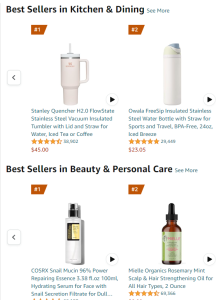
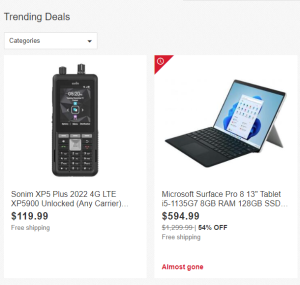
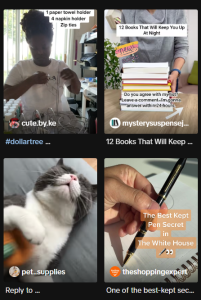
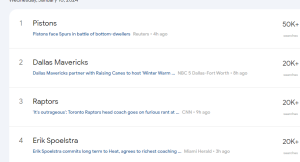
And other sources still will suggest taking a look at dropshipping platforms and ecommerce retailers like AutoDS, Amazon, eBay, Aliexpress, and Pinterest as they all have public-facing trending products lists. These methods aren’t bad. With TikTok hashtags, if you see hundreds of videos for one product, you can assume that it’s probably not worth competing for. Otherwise, if you see 30 or so videos, that could be something to try out.
These outlets, however, have some glaring issues. On one hand, they’re easily accessible and free. On the other, they’re easily accessible and prone to getting oversaturated quickly. At the end of the day, you’re not really “finding” a winning product so much as picking an item off a list that your competitors and other dropshippers made. If you can find this list, then ANYONE ELSE CAN.
There are exceptions, of course. For example, Zendrop’s exclusive Trending Products list that you can only access with a Zendrop Plus membership.
Millions of people use Zendrop to source and dropship their products, meaning millions of dollars exchange hands on a daily basis. Zendrop uses their proprietary data to analyze trending products before they go viral. Since these products come from Zendrop’s catalog, it only takes a few steps to link your store, have suppliers connected, and have the product ready to sell.
Because this Trending Products List isn’t available to the general public, you don’t have to worry as much about product lifespan or oversaturation. Of course, that depends heavily on the product and niche itself, but it’s certainly better than publicly available lists. The list also updates on a weekly basis with products hand-picked by Zendrop’s product specialists. You can get access to this list (and more) with a Zendrop Plus membership.
With Zendrop Plus, you can also get weekly dropship coaching, $100 in order credits, and a bunch of other stuff. Visit this page to get the full details.
Regardless of where you pick your product from, you should always do your due diligence so you don’t get burned later on down the road. So here are some ways you can conduct the necessary research to back up your gut feelings.
The first place you should check is the largest digital marketplace in the United States: Amazon.
You want to make sure that your product doesn’t have too big of a presence on Amazon since many prospective customers exhibit impulsive purchasing habits. As a result, some potential customers have likely scrolled through Amazon or other shopping catalogs, potentially exposing them to your product from a different seller.
However, don’t be afraid of having competition on Amazon. There are more than 12 MILLION listings on Amazon, so unless there are tens of pages of listings similar or identical to your product, competition on Amazon may indicate a healthy degree of customer demand.
Let’s start by looking up your product on Amazon. Take a look at the top listings and start picking out some of the best sellers. Take note of the seller rankings, reviews, and sales to collect a handful of the big players.

From there, grab the ASIN number off the products of each store and head on over to https://camelcamelcamel.com/. Camelcamelcamel checks the price history of items on Amazon, which lets you then see how well your product has been doing in the recent past.
If the price is consistent or on an upward trend, fantastic. We’re on the right track. This is just a preliminary check to see how well the product is doing on a broader scale.
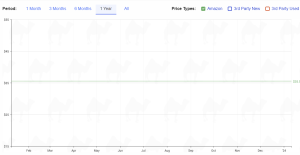
If the prices have been declining, there’s a good chance it hasn’t been performing well.
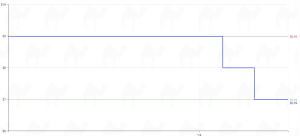
And if the price trends are wavy up and down, that’s probably a seasonal product.
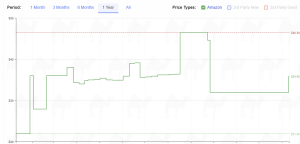
We want to avoid downward trending products and seasonal products so we can focus on consistent profit. Seasonal products are time-gated and usually hyper competitive given the high potential for profits. As such, I do not recommend these products for beginners.
We can try to guesstimate market demand by cross-checking against TikTok Ads and Meta ads. This isn’t an exact science as the results depend heavily on the product and niche itself.
In general, active ads that have been running for a long time usually indicate that the business is turning a profit. This can be a good indicator that your product is worth going in on, but you must always exercise a certain degree of caution.
Go ahead and visit https://www.facebook.com/ads/library/ and https://library.tiktok.com/ads/. You can either search up your competitors or use keywords related to your product. This should show you a list of running ads that you can use for inspiration and educational purposes.
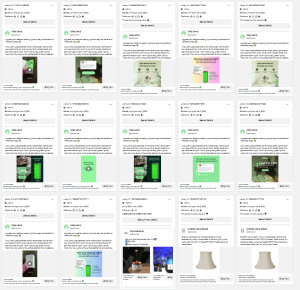

Consider the following questions to ask yourself:
How many businesses are running ads for this product?
Do these businesses have a long history of running ads for one product?
What sort of creatives and copy are these ads employing?
After all this, we’re still generally operating off of ‘elevated gut feeling’. There aren’t a whole lot of hard figures we can leverage to back-up our products, yet. However, your research should give you a much clearer picture of whether or not your product is worth testing even further.
If by this time you’re still unsure, then hopefully this next section where I walk you through measuring customer demand will shed some light.

Why guesstimate customer demand when you can get the answer from the horse’s mouth? One of the best ways to test customer demand is with organic social media. There are many ways to go about this, so I’ll briefly cover three of the most accessible methods.
Forums or Communities:
Joining a Facebook group, a reddit community, or other dedicated forum for a specific niche can offer up valuable information that you can use to pick winning products. More often than not, these groups prohibit any form of self-promotion.
For these groups, you need to be valuable and nuanced. Ask for feedback on the products you want to sell in a roundabout way. Something like,
“Hey folks, my back’s been hurting and I was looking at this spike mat I found. Anyone have experience with this?”
TikTok Organic:
Now this is a platform where you CAN be a little direct with your messaging, but I recommend a different approach. Really quickly, let’s talk about ‘Search Intent’. It’s an SEO term (you don’t need to know SEO… yet) that we can apply to better mold our approach.
There are four search intents you ought to be aware of:
Navigational: The user just wants to get to a specific page
Informational: The user wants to learn about something
Commercial: The user wants to buy something but wants more information first
Transactional: The user wants to take action, oftentimes a purchase
What we want to focus on is Informational, Commercial, and Transactional. Creating content on TikTok that feeds into these intents can help you mine user feedback and eventually funnel customers onto your store.
So depending on your product and niche, there’s a good chance that there exists an angle or a ‘hook’ that your customers are looking for. These hooks almost ALWAYS fall into the three search intents mentioned above.
For example, I tested a bunch of airsoft accessories via TikTok organic.
I created a “TEMU Airsoft Accessories Review” series (Informational/Commercial Intent) on TikTok when TEMU was trending. The video quality was by no means good. I filmed the shorts on my desk with my phone and did zero editing. Yet somehow, I averaged 2,000 - 5,000 views per short. All I did was give my honest opinion on whether or not you were getting a good deal on a specific accessory from TEMU.
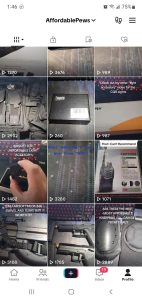
Even with low production quality, the videos performed really well. What does that mean? There’s a demand for affordable, middle-of-the-road quality airsoft accessories. And anything you can find on TEMU, you can DEFINITELY find on Aliexpress or Zendrop = great opportunity for dropshipping.
So come up with an angle or a hook that appeals to your target audience, and create a TikTok series about your product or niche. Just make sure to use relevant hashtags that get a decent amount of traffic as this will boost your searchability.
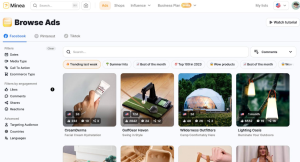
Up until now, we’ve explored many options that offer broad data as far as market research is concerned. This definitely can be enough to move onto the next step (Product Market Fit Testing), but would likely require some more elbow grease.
Leveraging the latest research tools and strategies can give you an edge in the dropshipping arena. We'll introduce cutting-edge tools and methodologies to streamline your product research, helping you make informed decisions backed by data.
Research tools are great because they take all of that manual research and automatically do it for you. I recommend using Minea since it’s easy to use and has a free plan that you can use to get started.
Click Here To Get a Free Trial For Minea
Minea analyzes 200 million+ products across Facebook, TikTok, Pinterest, and Instagram to calculate trends, demand, and competition. You get pretty much all of your product research done for you, in one place.
Here’s what you can get with Minea:
It essentially takes care of the entire research process for you, and it provides the numbers to back it up.
But once you’ve settled on one (or more) products, did your research, and have decided to move forward…
Should you have a single-product store, or a multi-product store? Though it may not seem like a big deal, this can actually make or break your dropshipping business idea.
Choosing between a single-product or multi-product store is a critical decision. This section will help you weigh the pros and cons of each approach, guiding you towards the best fit for your business model and market goals. It’s important to note that one is not objectively better than the other. It is, however, important to know the differences between having a store with a bunch of products, and having a store with one product.
Customer sophistication has increased significantly over the past 5 or so years. A direct result is customers being able to spot a dropshipping store pretty much right away.
Dropshipping has incurred a bad reputation in recent years due to the influx of newcomers setting up poor quality stores with poor quality products and bottom tier customer service. In short, customers think dropshippers are scammers.
Things like low quality websites, missing pages, inconsistent product photos, and more can directly result in lost customers and sales.
My suggestion is for beginners to go for a multi-product store rather than a single-product store. There are many reasons why, but in short…
You can read up on a more in-depth explanation here.
Now that you have products you feel confident in, it’s time to test them for real. You’ll be taking your products and seeing if you can find Product Market Fit, or PMF.
This next phase will take all of your market research and determine how profitable your product can actually be. You’ll be testing different angles, hooks, audience profiles, and more to see where you can start mining for gold.
Remember, the world of dropshipping is dynamic and requires continuous learning and adaptation. Embrace the process of discovering new trends, understanding customer needs, and staying ahead of the market. Whether you're a beginner or looking to refine your existing strategy, the insights provided here will serve as a valuable resource on your path to ecommerce success.
So, take these learnings, apply them to your business, and watch as your dropshipping venture flourishes. With dedication, research, and the right approach, you're well on your way to finding those winning products that not only captivate your audience but also drive your business towards profitability and growth. Here’s to your success in the exciting world of dropshipping!
